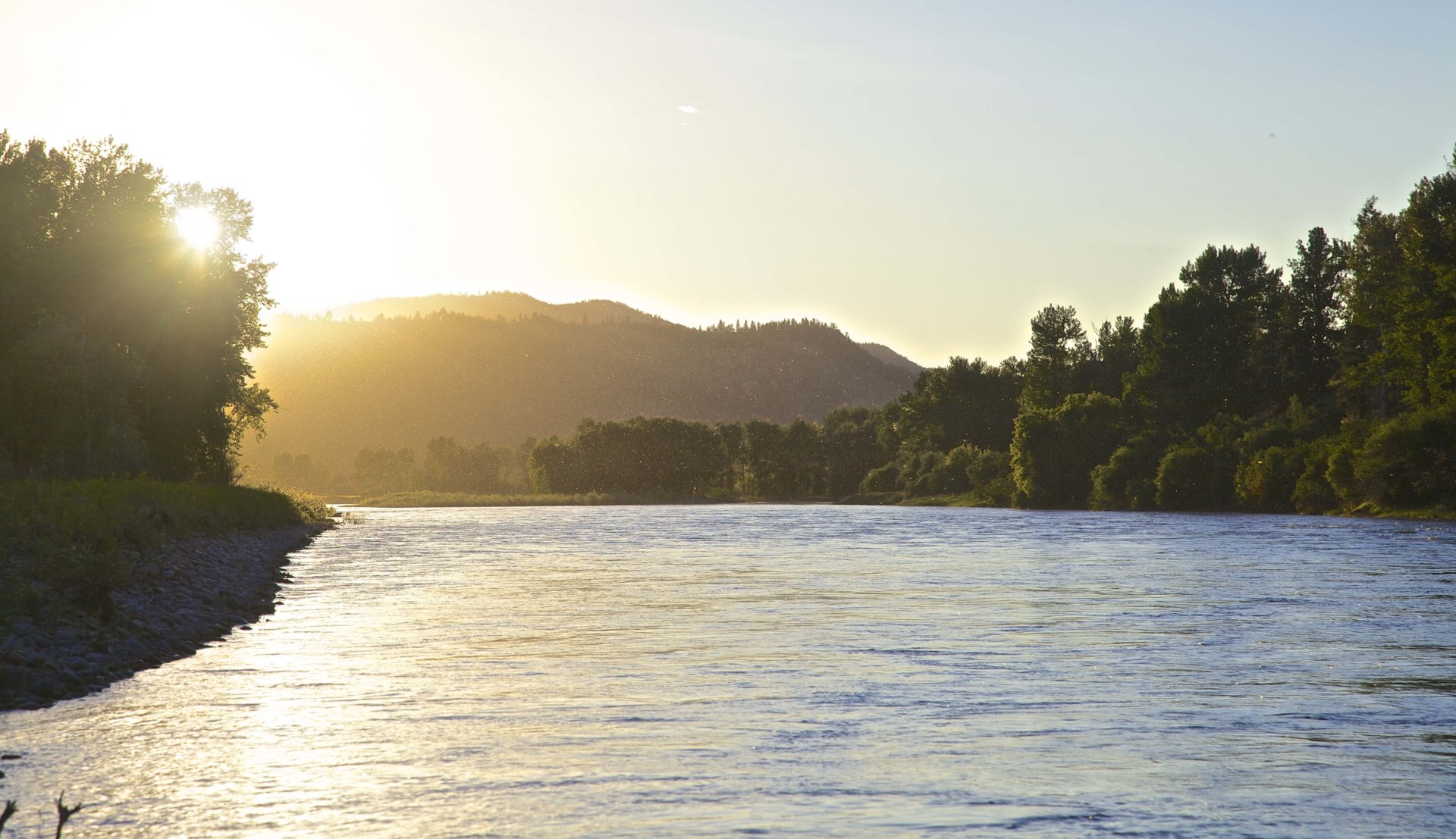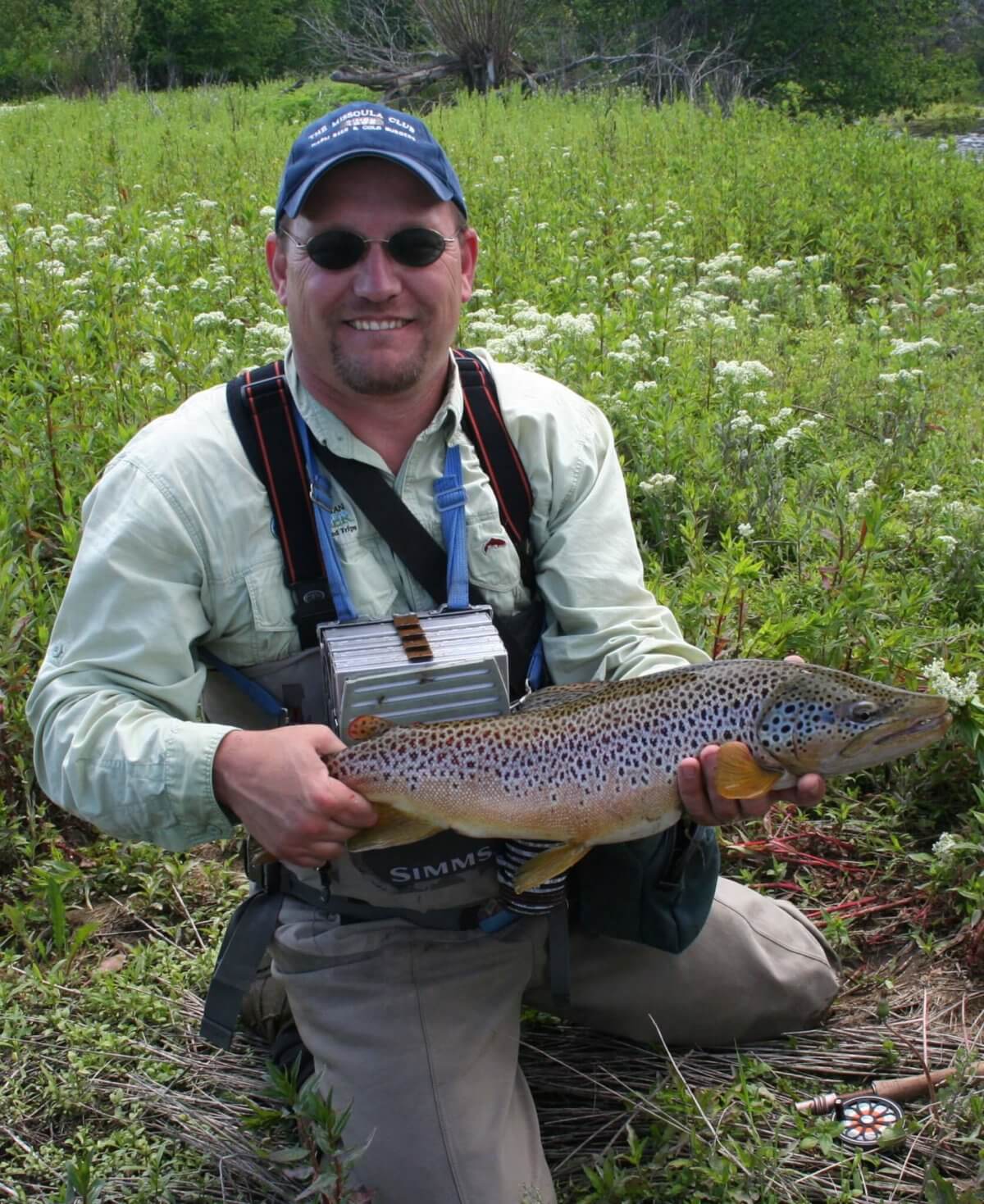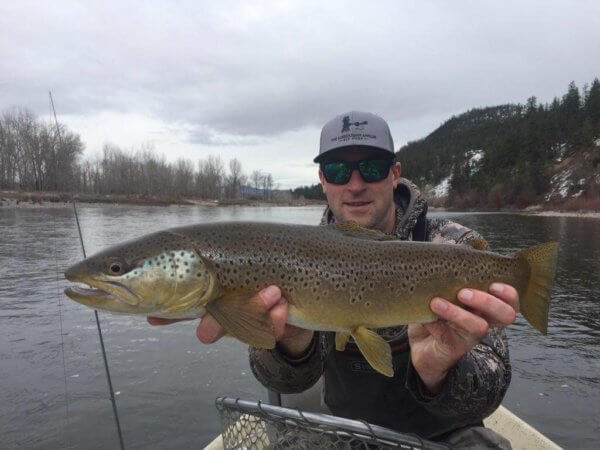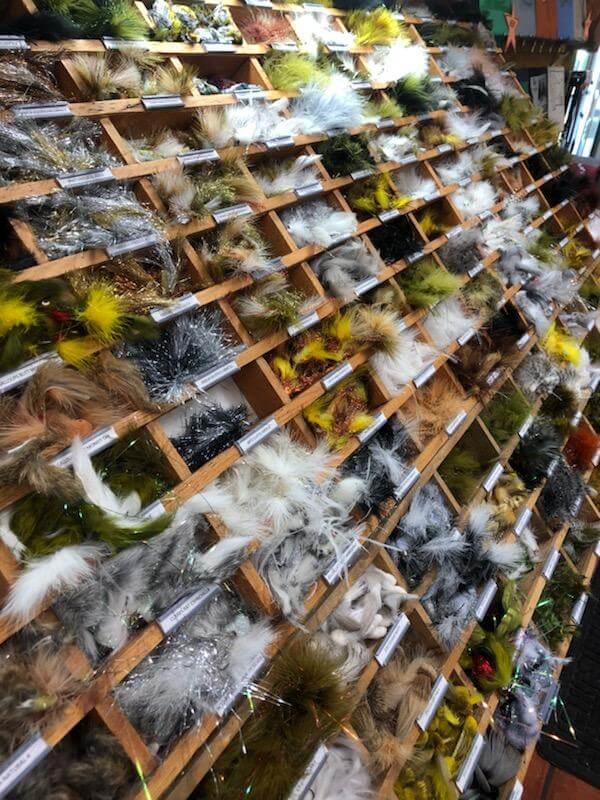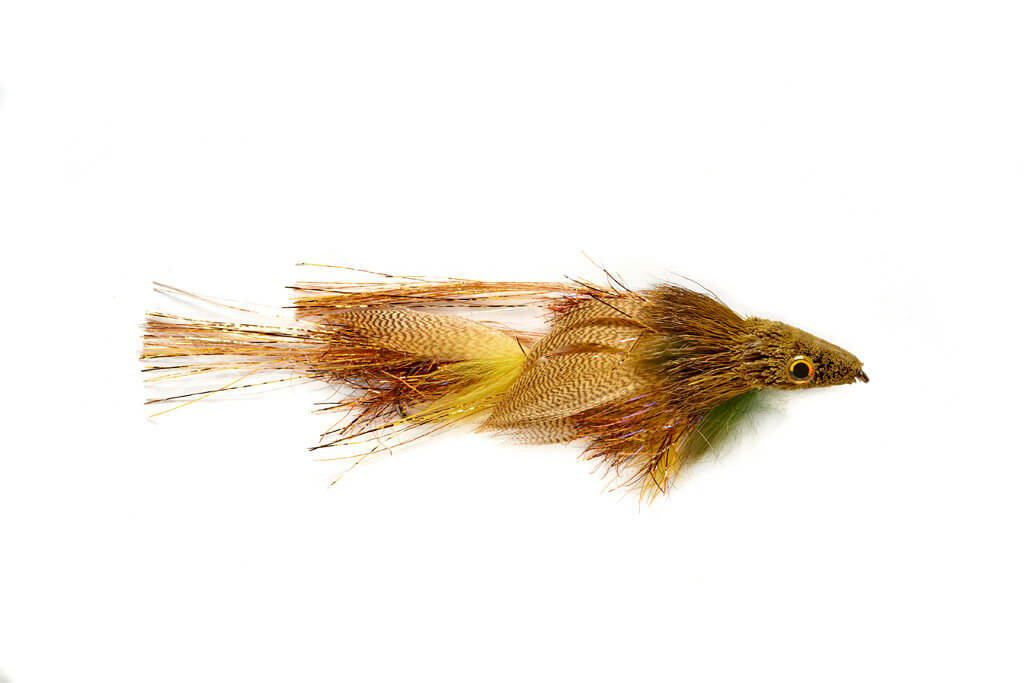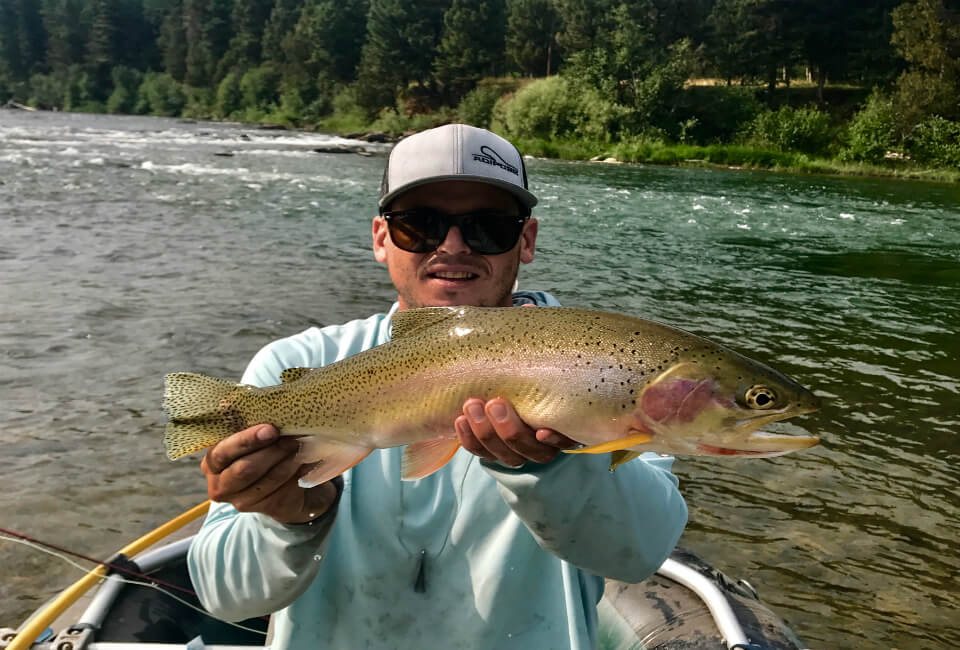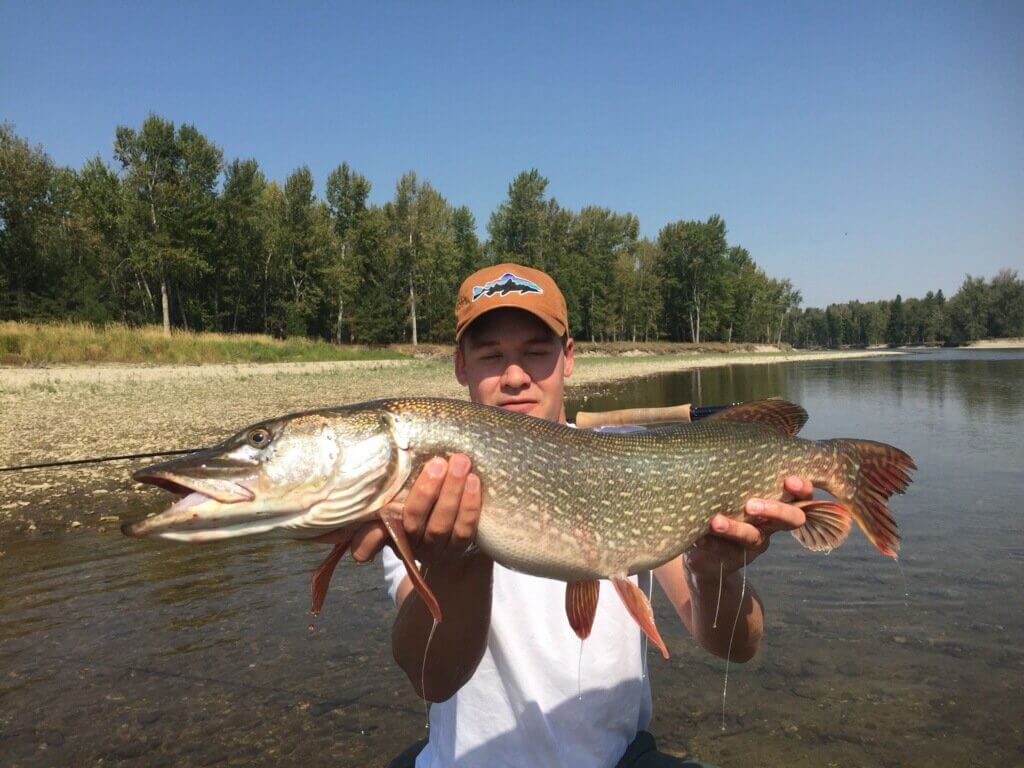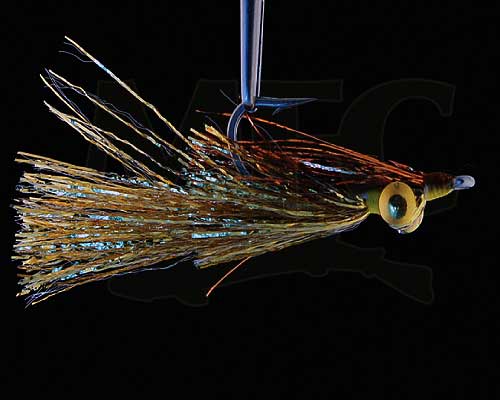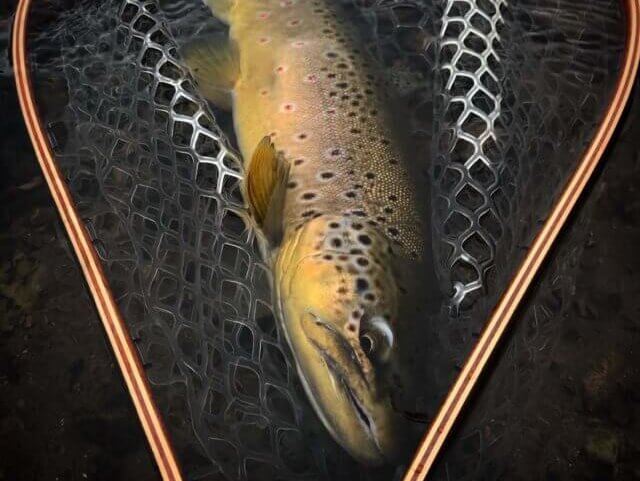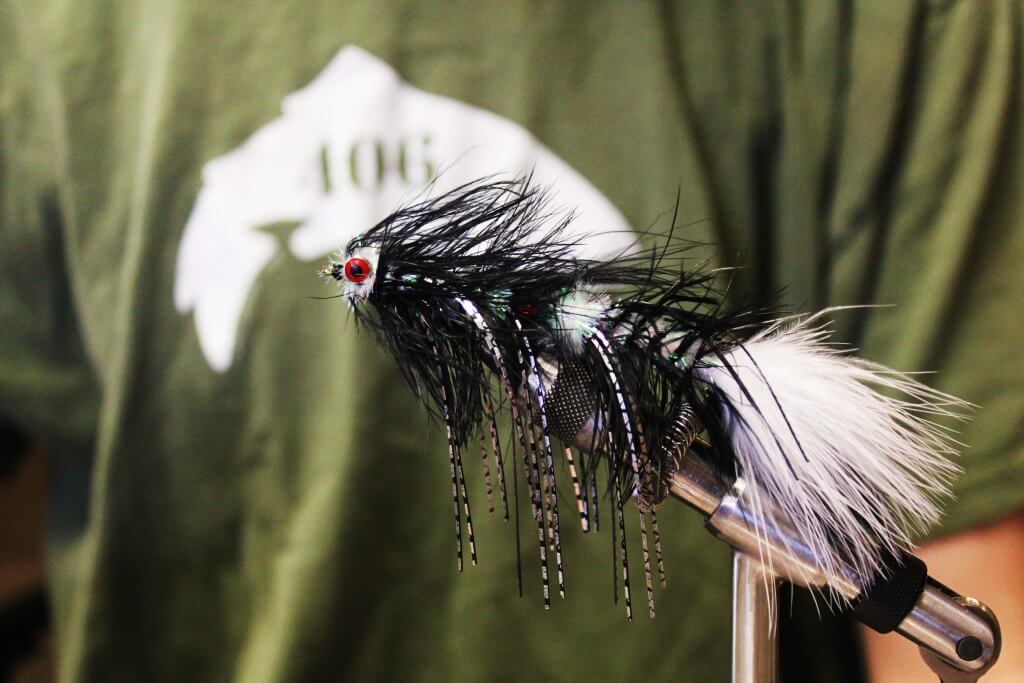You wont find it at Ace, or Sherwin-Williams. It’s not a recognized color on a mixing wheel, and it varies from angler to angler. But it’s a color, all right. When the water isn’t brown, but it isn’t clear, it’s Streamer Green
Trout have an IQ of 4. Don’t tell anyone, we can look foolish enough on our own without that info getting out! It means trout can’t do two things at once. The rivers are full of food right now, and the fish are out feeding like crazy. Get so focused on your food, and the next thing you know, you’re dinner! Big fish eat little fish. Lots of food makes little fish get bigger. It’s a risk/reward type of thing, and sometimes the risk is substantial. Add the dropping water, which is moving the fish from place to place in search of new homes. The fish are displaced, vulnerable and trying to feed. All this screams streamers to the angler.
If you have a dedicated 7 or 8 weight streamer rod, you already know what to do! Bang the banks with a big fly, like the Beastmaster or Hop Scotch Sculpin. The big heads push a lot of water, so the fish can find your fly more easily. Work the shoreline, work the structure. Use a short leader on your sink tip, so the fly gets deep and stays there. Use the big stuff, 15lb Maxima. These fish aren’t leader shy, and heavy tippet has saved many a $6 fly from dangling in a tree branch. If you really have to reef on the fly to get it free, check the hook and make sure it’s not bent out. Then cast it out again! You know the drill.
If you don’t have a dedicated streamer rod, there are ways to handle the bigger, green water with a streamer. Use the heaviest line weight rod you have- it helps to control the bigger, heavier flies A long leader and a well weighted fly will help you attain some depth. We often recommend a Bonefish leader 12’ long with a 12-16lb test. The big, stiff leader helps turn that heavy fly over, and again, trout eating streamers aren’t leader shy. The trout doesn’t have a lot of time to make up its mind to eat or not, so leader thickness is not an issue.
There are two schools of thought on fly size. One says to use the largest fly you can throw, and get it close to your target. The other school says use a smaller fly, and be more accurate. Big fish are where big fish are. If you land a 5 inch fly 2 feet away from a trout, it might eat because the fly is big enough to risk coming out from cover and expending the energy to eat. If you drop a 2.5 inch fly 6” from the trout, it might be an easier choice. Both methods work, and both have their adherents. It’s good to know about both!
If you don’t think you’re getting deep enough with a long leader and weighted fly, you can purchase sinking leaders. They come in different lengths and sink rates. You can get a few and experiment, but we often find the longest and fastest sink rate you can handle is best. We stress that you can handle. Use a short leader (2-3’) off the end, as the mono leader doesn’t sink as fast and if it’s too long, the leader is way deeper than the fly. Keep in mind you’ve added a lot of additional weight to your fly line when you add the sinking leader. It’s like casting a 7-8 wt line on a 5-6 wt rod. Make sure you bring the fly close to you before starting your backcast, or the cast may fail. Worst case scenario, the rod fails! Depending on how deep the fly and leader is, you may need to roll cast the fly to the surface, and then pick it up. Sink tips work a little differently than a floating line, so be ready for some changes to your casting stroke.
With the rivers so big, you’re going to want to work the banks. 80% of all trout are found within 10’ of the shore, so let your cast swing all the way out if you’re wading. Work the soft water and any structure you find. If you’re using a bigger fly, make a couple few casts and then move on. If the fish was going to eat, it would have already. Streamer fishing isn’t like nymphing. Continuous presentations aren’t always what is needed. If you’ve gotten good casts to a likely spot, and seen nothing, move on and find a new spot. Plenty of fish in the river! If you’re floating the river, this is all built in. Bang the banks, and be ready for a fish off every shelf and behind every log.
On general principles, the more off color the water is, the darker a fly you should use. A dark fly creates a better silhouette than a light colored fly, and in murky water that’s a big plus. If the water is light green, you can start with a lighter color. Vary your retrieve. Let the trout tell you if they want the fly subtly moved, or violently stripped. Always keep in mind you can’t move your fly fast enough to keep it away from a big trout bent on eating, so if the slow strip isn’t working, start to move the fly with some speed. Vary the flies entry into the water, and use aerial or water mends to give the fly line some slack, which will allow the fly to sink. Be ready for a fish on the flies first movement, as many large fish will take a dead drifting streamer as an extremely easy meal.
Streamer can be boom or bust. When you’re throwing a big fly, a lot of fish aren’t capable or willing to attack something that large. But the fish you do take on a streamer can be significant. Streamer fishing isn’t for everyone. It takes a lot of effort to throw the big rod and sink tip all day, especially if the fish aren’t cooperating as you think they should! But if you love streamer fishing, or are ready to check out what all the fuss is about, take advantage of the off color clarity that is Streamer Green, and get the big bug in the water!
